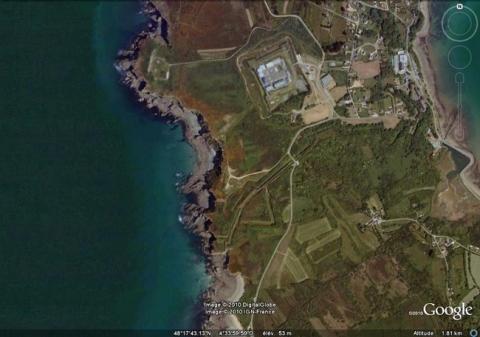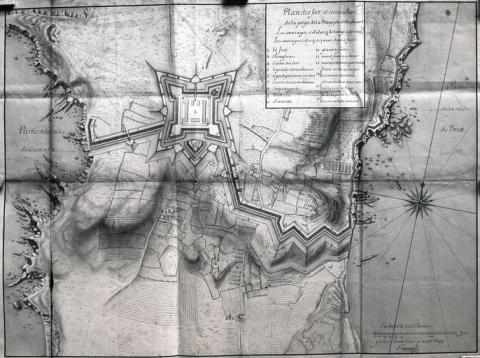Roscanvel
History and description
The defensive lines from Quélern to Roscanvel were planned by Vauban from 1689, at the start of the war of the League of Augsbourg. His objective was to avoid the batteries protecting the south side of the bottleneck of Brest being taken back by an enemy landing. He advocated the creation of an entrenched camp. But it was not until 1694 that the works were plotted, and the implementation did not get underway until May 1695. Vauban himself directed the construction as the commander of Brest. The work was in the form of a bastioned entrenchment on multiple fronts, supported in its setting by a square fort equipped with four angled bastions and a ravelin in front of its sole gate in the south front. A covered way with traverses and incoming and outgoing parade grounds surrounded the fort. The engineer Traverse applied the plans of Vauban.Only the entrenchments, preceded by palisades and a ravelin of the fort were completed at the end of the 17th century. It was not until the war of American Independence in 1777 that the fortifications of the defensive line were completed (in 1785). As for the fort, it was only constructed in 1852-1854, under the Second Empire. The plans of Vauban were modified.
Current state
The fort and the defensive line of Roscanvel still exist but are landlocked into a military area and inaccessible.
Roscanvel
Roscanvel
48° 19' 2" N, -4° 32' 50" E
Type
entrenched camp and fort
Engineers
Sébastien le Prestre de Vauban, Jean-Pierre Traverse
Department
Finistère
Region
Bretagne
Bibliography
- FAUCHERRE (N.), LECUYER (G.), La route des fortifications en Bretagne Normandie, Paris, 2006.
- Ouvrage Collectif, Vauban et ses successeurs sur les côtes de la Manche, Paris, 2003.

